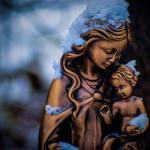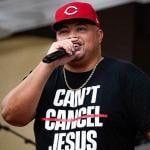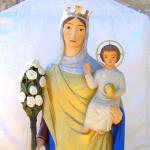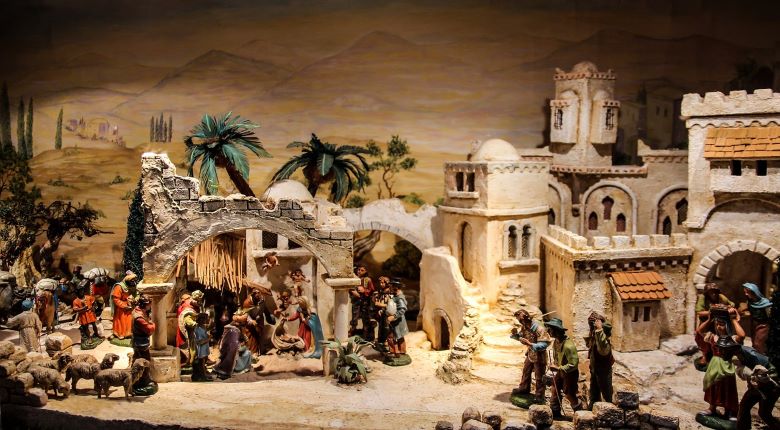
We all know the Christmas story: Mary, Joseph, the shepherds, the wise men, the king, infanticide, assorted animals, lots of angels. Do the two versions found in the Gospels of Matthew and Luke tell the same story? Are there other versions of the story not in the Bible?
Only the Gospels of Matthew and Luke in the Bible relate the story of Jesus’s (more correctly Yeshua’s) birth. We are not concerned here with why the other two canonical gospels, the Gospel of Mark and the Gospel of John omit any mention of the birth of Yeshua. We are concerned with what the gospels actually say, which details are the same in the two stories, which are different, and what non-Biblical sources say about the event?
How does the Gospel of Matthew relate the story of the nativity?
The account in Matthew is found in Matthew 1:18-2:23. Without further explanation, the author of Matthew begins his narrative by announcing that he is telling the story of the birth of Jesus Christ and next identifies a woman named Mary as his mother. He does not tell us much about her except that she was “betrothed” to a man named Joseph. Scholars do not agree as to whether the word translated as “betrothed” means that she and Joseph were married or that they were engaged.
Mary is discovered to be “with child from the Holy Spirit.”
When Joseph discovers that Mary is pregnant, he decides to quietly divorce her so that she will not suffer shame because he is a “just man.” The author does not elaborate as to how an unwed mother will be regarded if Joseph does not marry her. (That seems to be a relevant question.)
How does Joseph react?
As Joseph is considering his options, an angel of the Lord comes to him in a dream and tells him that he should go ahead and marry Mary because her pregnancy was caused by the Holy Spirit and that “She will bear a son, and you shall call his name Jesus, for he will save his people from their sins.”
The author declines to say how “it was known” before Joseph’s dream that Mary had been impregnated by the Holy Spirit but that’s what the Matthew author states.
The narrative then shifts to an (importantly) unidentified prophecy:
Two points need to be made here:
- The narrative says that the angel tells Joseph that he is to name Mary’s baby “Jesus” but the unidentified prophecy states that the name (of someone, it turns out) is to be “Emmanuel,” a different name in Hebrew and in Greek.
- The prophecy quoted by the angel is from the Book of Isaiah in the Hebrew Bible. This quotation, as we have seen, is from the time of the reign of Ahaz, who was king of Judah in the time of Isaiah. Ahaz asks Isaiah for help with two neighboring kings who are vexing him. The prophet then utters the quotation taken by Matthew, but it is about a completely different event 700 years before Yeshua’s birth and has absolutely nothing to do with Jesus whatsoever. The Gospel of Matthew gives no further explanation.
After Joseph’s dream, he takes his instruction from the angel and marries Mary. The narrative then says that Joseph did not “know” Mary until after Jesus was born. (It is interesting to note that there is no Jewish law prohibiting a pregnant woman from having sex.)
Where and when was Jesus born?
The Gospel of Matthew then shifts to Jesus’s birth “in Bethlehem of Judea in the days of Herod the king.” The author tells us that “wise men” from the East came to Jerusalem after following a star to “worship” the king born there as guided by that star.
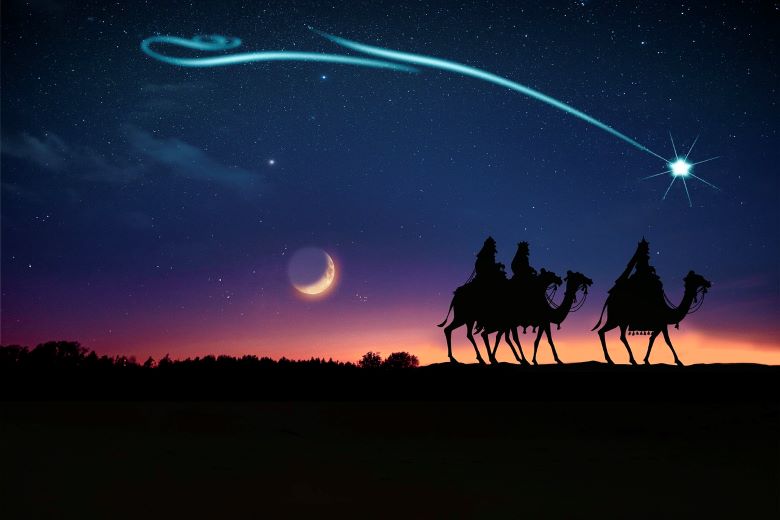
From here, the story gets pretty wild!
Upon arrival in Jerusalem, the wise men begin to inquire after this child born to be a king. Herod who is currently the king hears of this and questions the wise men. Herod calls together his own wise men who tell him that the king being referred to was to be born in Bethlehem, the “City of David,” as written by “the (unnamed) prophet.”
“‘And you, O Bethlehem, in the land of Judah,
are by no means least among the rulers of Judah;
for from you shall come a ruler
who will shepherd my people Israel.’”
Note: I have been unable to find this quotation or any which contains all of these elements in any prophesy in the Hebrew Bible. There are many similar references, most notably in 2 Samuel 5 and Ezekiel 5.
Herod’s secret plan.
Herod secretly summons the visiting wise men and tells them he wants to know when they find the baby king so that he himself can go and worship him. After the wise men have heard what Herod has had to say, they follow the star to Bethlehem to the house, (not stable), where Yeshua was born.
The wise men worship Yeshua, giave him lavish gifts and departd to their own country without telling Herod they have found the baby king.
Once again, an angel of the Lord comes to Joseph in a dream and tells him of Herod’s plot to kill Yeshua and instructs him to take Mary and Yeshua to hide out in Egypt. The gospel says this is to fulfill the prophecy, “what the Lord had spoken by the prophet, ‘Out of Egypt I called my son.’ ”
When Herod realizes that he has been tricked, he dispatches soldiers to go to Bethlehem and kill all male children under two years of age.
Herod’s death and the return to Israel
When Herod dies, an angel of the Lord again visits Joseph in a dream, instructing him to return with Yeshhua and Mary to Israel. Joseph, however, learns that Herod’s son, Archelaus, is now king in Roman Judea, he elects to take his family to Nazareth in Galilee.
This is all that we learn from the Gospel of Matthew regarding the circumstances of Yeshua’s birth.
The story of Jesus’s birth in the Gospel of Luke.
The version of the Nativity story found inn the Gospel of Luke is found in Luke 2:1-20.
The author of the Gospel of Luke tells the story in a different way. The Luke author makes no mention whatever of:
- Joseph’s dream about Mary’s pregnancy
- The visit of the wise men
- The flight to Egypt
- The slaughter of the innocents
Common the both Matthew and Luke are;
- The census and the travel to Bethlehem
- The birth in a manger
- The return to Nazareth (though in different contexts)
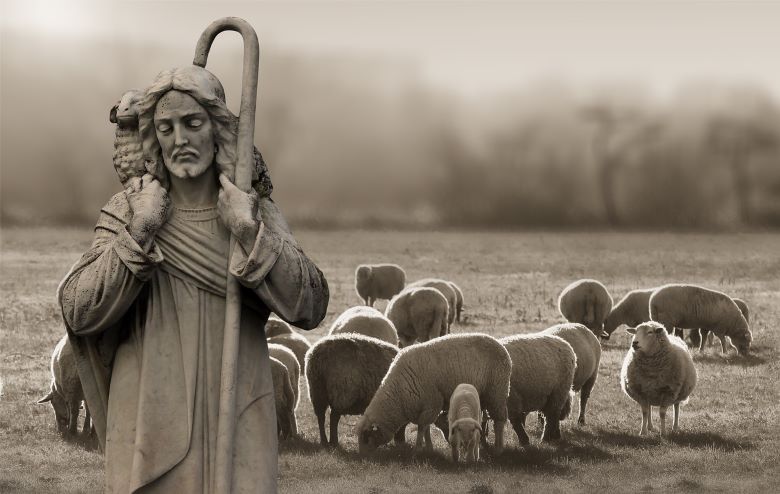
What unique elements are included in the Gospel of Luke?
The Luke author begins his account with what has come to be known as “the Annunciation to the Blessed Virgin Mary,” found in Luke 1:26-38.
In this version, the angel Gabriel is dispatched to the town of Nazareth in Galilee to visit Mary, a virgin who is betrothed to a man named Joseph. Then angel tells Mary that she has found favor with God and that she will conceive and bear by a son who will rule over David’s kingdom.
Mary objects to this prediction, telling the angel that she cannot conceive since she remains a virgin.
The angel responds to Mary’s objection.
The angel responds, telling Mary, in Luke 1:35 :
“And the angel answered her, “The Holy Spirit will come upon you, and the power of the Most High will overshadow you; therefore the child to be born[d] will be called holy—the Son of God.”
He tells Mary that, by the way, your barren and elderly cousin Elizabeth is in her sixth month! (Spoiler for some: Elizabeth is carrying John the Baptist, an interesting coincidence.) He tells Mary that nothing is impossible. God can make it happen. Mary essentially tells the angel to go for it, she is ready.
The Gospel of Luke’s account of Yeshua’s birth.
After the Annunciation, the Luke author in the second chapter, verses 1-21, gives his version of the Nativity.
He cites the census of Augustus, the reason that Joseph and his very pregnant wife travel from Nazareth to Bethlehem, Joseph’s home town (a distance of about 80 miles), to be registered in the census. Mary has her baby, wraps him in swaddling clothes and lays him in a manger, since there was “no place for them in the inn.”
Unlike the Matthew author, the author in Luke relates the story of shepherds who were watching over their flocks in that same region.
The story of the shepherds.
An angel of the Lord appears to these shepherds which scares them quite a bit. The angel tells them not to fear, that a savior is born in Bethlehem and that they are to go and worship him. Suddenly, a multitude of angels (or other heavenly beings, not specified and identified only as a “heavenly host”) appears and begins praising God.
The angels eventually leave and the shepherds proceed to Bethlehem where they find Joseph and Mary. They told Mary what they have heard and she considered their words carefully.
Then shepherds return, praising God.
The account of the Nativity in Luke ends with Yeshua’s circumcision on the eighth day in accordance with the Law.
Why are the accounts different and why do Mark and John not mention Yeshua’s birth?
There is not general agreement among scholars as to why the accounts are different. The simplest explanation is that the authors heard or read some of the same stories and heard or read some different stories about Yeshua’s birth. Professor Bart Ehrman has pointed out that scholars are almost unanimous in their belief that the gospels appeared around 70 CE.
During this time, there were different churches in cities around the area of Jerusalem and also, by this time, far from it. Each of these churches might have had access to different stories and accounts. We also know that not every church or community had exactly the same version of Christianity and the beliefs could be widely divergent.
It is not known why the authors of Mark and John contain no birth story. The theories which have been put forth are highly speculative.
Where did the gospel authors obtain the information they included?
Given the antiquity of these gospels and to the different ancient manuscripts which contain parts of the canonical gospels and other gospels as well, there are a number of theories about the sources of the gospels. These theories seem to converge at a point where scholars generally believe that the Gospel of Mark was written first and that the authors of Matthew and Luke used Mark as a source.
They also believe that another source, called “Q” for convenience, informed both Luke and Matthew. They believe also that each of these gospels (Matthew and Luke) had a source that was not available to the other. We are not considering the Gospel of John here since it does not appear to be related to the gospels which contain a version of Yeshua’s birth and because it contains no account of the Nativity.
Are there Nativity stories outside the canonical gospels?
Roman historians Tacitus and Suetonius mention events around Yeshua’s life but contain no account of his birth. Josephus and other Jewish sources provide background information but no birth story. The apocryphal gospels available to us do not provide much elaboration. The Infancy Gospel of Thomas focuses on Jesus’s childhood (not his birth) and the Infancy gospel of James (which has been called the story of Mary) focuses on her pregnancy, her relationship with Joseph and the growth of her faith.
In short, we do not have available extra-Biblical accounts of Yeshua’s birth.
Where do the versions agree and where do they differ?
| Annunciation to Mary | Gospel of Luke | Only mentioned in Luke |
| Visitation to Elizabeth | Gospel of Luke | Only mentioned in Luke |
| Birth of John the Baptist | Gospel of Luke | Only mentioned in Luke |
| Joseph’s dream about Mary’s pregnancy | Gospel of Matthew | Only mentioned in Matthew |
| Census and travel to Bethlehem | Gospels of Matthew and Luke | Differ slightly in details |
| Birth of Jesus in a manger | Gospels of Matthew and Luke | Differ slightly in details |
| Visit of the shepherds | Gospel of Luke | Only mentioned in Luke |
| Circumcision of Jesus | Gospel of Luke | Only mentioned in Luke |
| Visit of the Magi | Gospel of Matthew | Only mentioned in Matthew |
| Flight to Egypt | Gospel of Matthew | Only mentioned in Matthew |
| Massacre of the Innocents | Gospel of Matthew | Only mentioned in Matthew |
We can see that the “Christmas Story” we see depicted everywhere at Christmas time is a blend or conglomeration of the stories in Matthew and Luke with a few added details like camels. There is no mention of camels in the birth stories.
Stay tuned for a discussion of camels in the Hebrew Bible and the New Testament.
I wish a Merry Christmas to all who celebrate!



